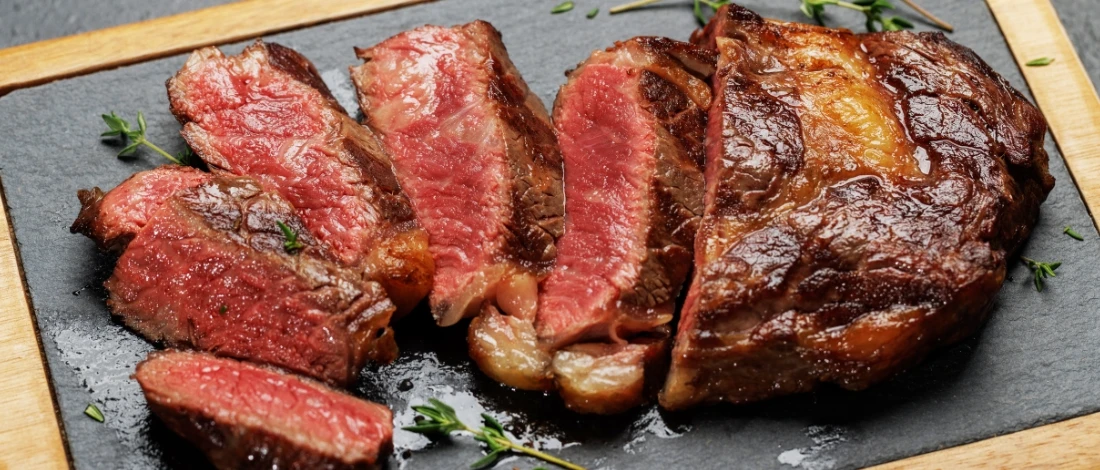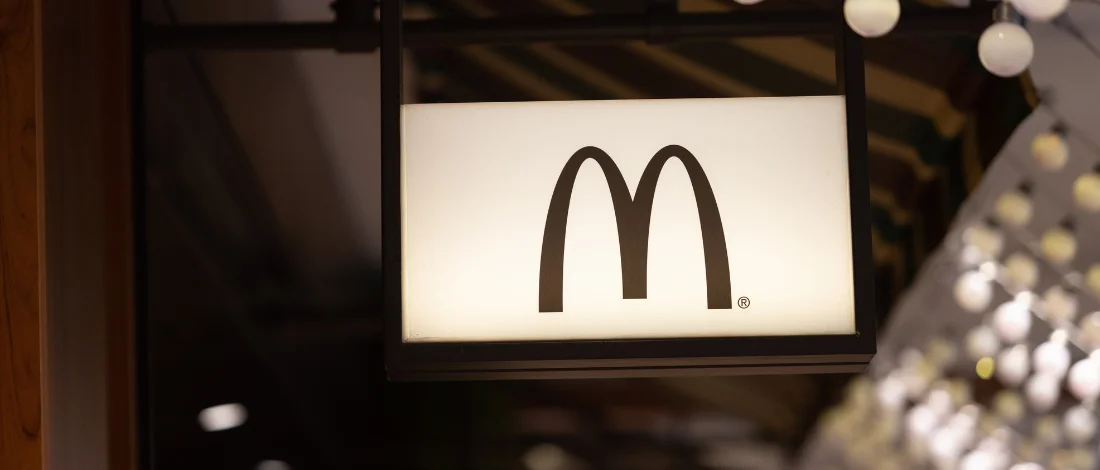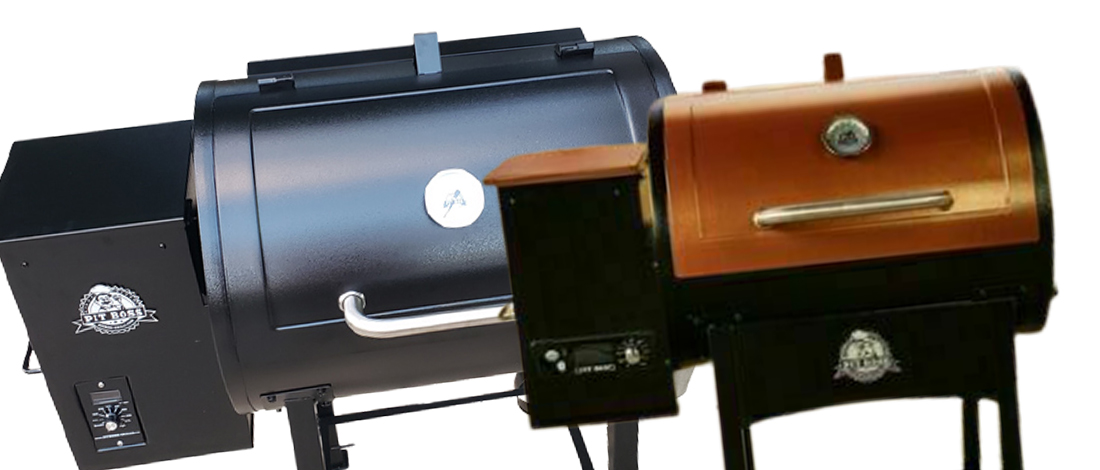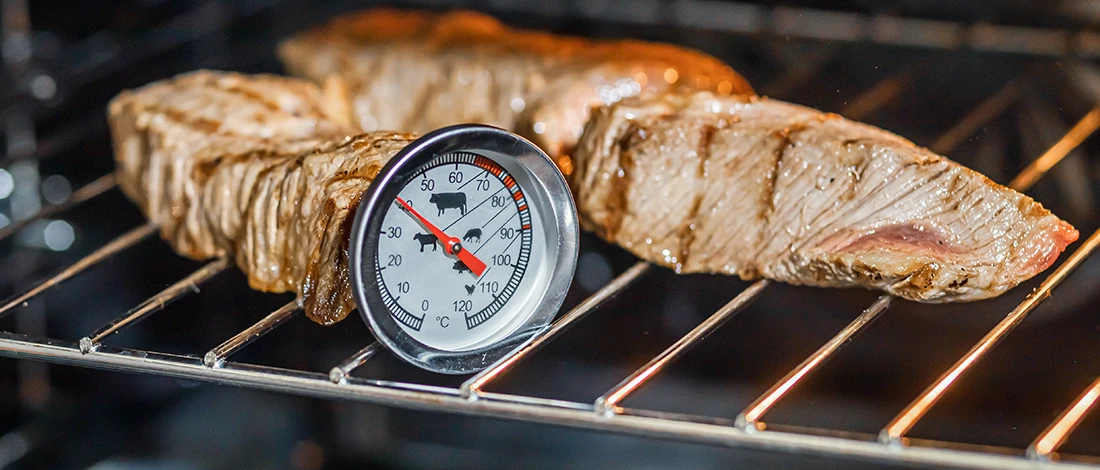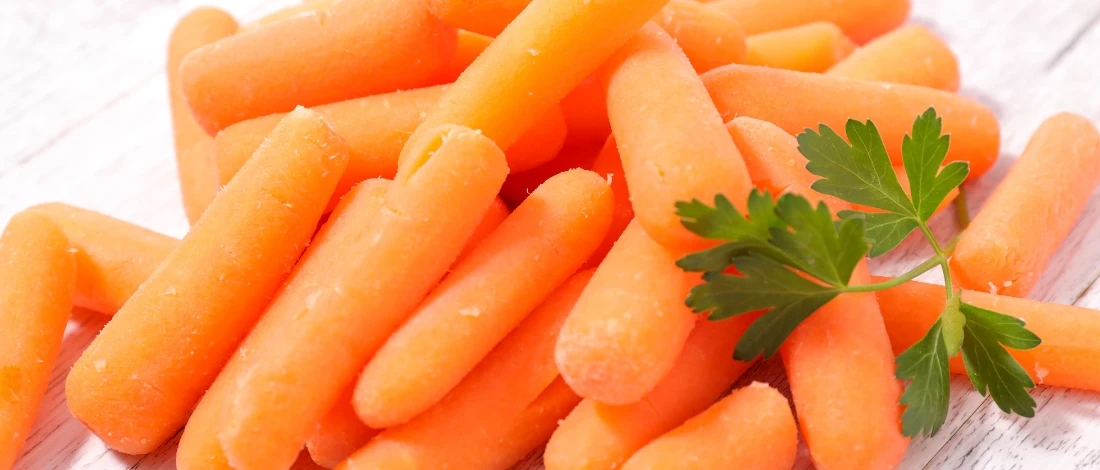Smoking meat might seem daunting at first glance, but it's easier than you think!
Whether you're a beginner looking to tackle your first pork butt or an experienced pitmaster seeking to fine-tune your technique, we've got you covered.
For that, you will need a trusty instrument like the ThermoPro TP20 Thermometer.
Carnivore Style's team of professional Pit Masters has put together comprehensive charts detailing smoking times and temperatures, tailored for both novices and seasoned smokers alike.
Plus, we've thrown in essential pro tips to ensure you achieve that perfect smoky flavor and melt-in-the-mouth texture—be it for pork butt, pulled pork, or any other cut you're keen on mastering.
Quick Summary
- Smoking times and temperatures for various meats, fish, and vegetables are provided as guidelines for both novice and experienced smokers.
- Factors such as meat thickness, bone-in or boneless cuts, fat content, and environmental conditions can influence smoking time.
- Accurate measurement of internal meat temperature is crucial for ensuring the meat is cooked and safe to consume.
The smoking time and temperatures list in this article will assist you in smoking the perfect juicy cuts of meat.
Our professional Pit Masters have also included some valuable information about smoking. Read on to find out more.
Smoking Times And Temperatures

Smoking time and temperature charts are mere guidelines for meat smoking. The times on charts can vary greatly, but the most important information is the temperature of the piece of meat.
At Carnivore Style, we believe that the finished smoker temperature of the meat is proof that the meat is cooked and safe to consume.
“Keep a log-book to log your cook, key environmental conditions, and actions undertaken during the cook. This will shorten your learning curve and assist in the production of more consistent outcomes.”
- Wayne Mueller Pitmaster
Smoker meat temperature charts are great for beginners starting into meat smoking or to serve the professional as a reminder if they haven't smoked a particular cut for a while.
Most beginners will most often crank up the heat to get the desired smoker temperature up and speed up the smoking process, this will work, but it won’t result in the perfect juicy “low and slow” piece of meat.
Many factors can affect the smoking time of meat; some factors will result in a few extra hours.
A professional electric smoker will simply see the extra cooking time to increase flavor and just enjoy the Barbecue [1].
Here are a few factors that may increase the smoking time of your meat:
- Is the cut of meat bone-in or boneless
- A thicker piece of meat will take longer to reach higher temperatures
- The fattier cuts will take longer to cook
- Lifting the smoker lid is like having an un-insulated smoker; the exact meat temperature will drop, resulting in lower temperatures.
- The ambient temperature and weather conditions
Chart of Smoking Times And Temperatures

The following cooking time options are only guidelines, and the only way to ensure the smoked meat is cooked is to accurately measure smoker temperature.
Below are charts for beef, pork, lamb, venison, fish, seafood, and vegetables [2].
Beef Smoking Temperatures and Times Chart
See below the chart for smoking beef:
| Beef Cut | Smoker Temp | Internal Temp | Smoking Time |
| Beef brisket | 225 – 250°F | 190 – 205°F | 12 – 20 hours |
| Back ribs | 225 – 250°F | 185 – 190°F | 3 – 4 hours |
| Short ribs | 225 – 250°F | 190 – 200°F | 6 – 8 hours |
| Spare ribs | 225 – 250°F | 190 – 203°F | 5 – 6 hours |
| Prime rib | 225 – 250°F | 135°F | 15 min/lb |
| Chuck roast | 225 – 250°F | 190 – 200°F | 12 – 20 hours |
| Rump roast | 225 – 250°F | 145°F | 30 min/lb |
| Whole ribeye | 225 – 250°F | 135°F | 25 min/lb |
| Tenderloin | 225 – 250°F | 130 – 140°F | 2 ½ – 3 hours |
| Tri-tip | 225 – 250°F | 130 – 140°F | 2 – 3 hours |
| Sausage | 225 – 250°F | 160°F | 30 – 60 min |
Tips For Smoking Beef
- Beef brisket is done at around 195-205°F, but most Pit Masters will only remove it from the smoker at 203°F as it will continue to cook while resting.
- Prime rib can be seared on the grill or in the oven, producing a brown bark.
- Add 10°F for well done and minus 10°F for rare.
Pork Smoking Temperature and Times Chart
Below is the chart for smoking pork:
| Pork Cut | Smoker Temp | Internal Temp | Smoking Time |
| Pork butt | 225 – 250°F | 205°F | 1.5 hours/lb |
| Baby back ribs | 225 – 250°F | 180°F | 5 hours |
| Spare ribs | 225 – 250°F | 180 – 185°F | 5 – 7 hours |
| Loin | 225 – 250°F | 145°F | 4 – 5 hours |
| Belly bacon | less than 100°F | 140°F | 6 hours |
| Whole hog | 225 – 250°F | 205°F | 16 – 18 hours |
| Tenderloin | 225 – 250°F | 160°F | 2 ½ – 3 hours |
| Pork sausage | 225 – 250°F | 165°F | 1 – 3 hours |
Also Read: Pulled Pork Internal Temperature
Tips for smoking Pork
- Be patient when smoking pork butt; just an estimate of about 2 hours per pound
- Perfectly smoked pork ribs should not fall off the bone, but the meat should pull back cleanly from the bone.
Lamb Smoking Times And Temperature
Here is the lamb smoking chart:
| Lamb Cut | Smoker Temp | Internal Temp | Smoking Time |
| Lamb's leg | 225 – 250°F | 140 – 150°F | 4 – 8 hours |
| Lamb shank | 225 – 250°F | 190°F | 4 – 5 hours |
| Lamb's shoulder | 225 – 250°F | 170°F | 5 – 5 ½ hours |
| Lamb rack | 200 – 225°F | 135 – 140°F | 1 ¼ hour |
Smoking Tips For Lamb
- Cut extra slits into the meat for the smoke to penetrate
- Use fresh herbs and fruity wood to enhance the flavor of the lamb
- Base the lamb to prevent it from drying out too quickly
Poultry Smoking Times And Temperature
Below is the chart for poultry:
| Poultry | Smoker Temp | Internal Temp | Smoking Time |
| Chicken whole | 275 – 350°F | 170°F | 2 – 3 hours |
| Chicken quarters | 275 – 350°F | 170°F | 1 – 2 hours |
| Chicken thighs | 275 – 350°F | 170°F | 1 ½ hour |
| Chicken wings | 275 – 350°F | 170°F | 1 ¼ hour |
| Turkey whole | 275 – 350°F | 170°F | 4 – 5 hours |
| Turkey leg | 275 – 350°F | 170°F | 2 – 3 hours |
| Turkey wings | 275 – 350°F | 170°F | 2 – 2 ½ hours |
| Turkey breast | 275 – 350°F | 165°F | 4 hours |
| Quail / Pheasant | 225°F | 165°F | 1 hour |
| Cornish Hens | 240°F | 165°F | 2 hours |
| Whole duck | 225 – 250°F | 165°F | 4 hours |
Tips For Smoking Poultry
- Always cook poultry to the USDA minimum temperature
- Do not wet brine chicken, rather dry brine for a crispy skin
Fish And Seafood Smoking Time And Temperature
See below the chart for fish and seafood:
| Fish and seafood | Smoker Temp | Finished Temp | Smoking Time |
| Salmon whole | 200°F | 145°F | Till flaky |
| Whole trout | 225°F | 145°F | 1 hour |
| Salmon filet | 220°F | 145°F | 1 hour |
| Tilapia filet | 220°F | 145°F | 1 hour |
| Lobster tails | 225°F | 140°F | 45 min |
| Oysters | 225°F | N/A | 30 – 40 min |
| Scallops | 225°F | 145°F | 45 – 60 min |
| Shrimp | 225°F | N/A | 20 – 30 min |
Tips For Smoking Fish and Seafood
- Keep an eye on Salmon, as it will dry out quickly. It is ready when it starts to flake at around 145°F
- Shrimp will tell you when they are cooked; their shells will turn bright pink. Be aware that shrimp will become chewy at around 150°F
- Oysters are done when their edges start to curl up.
Venison Smoking Time And Temperature
Here is the smoking chart for venison:
| Venison | Smoker Temp | Finished Temp | Smoking Time |
| Venison Roast | 225°F | 165°F | 45 -60 minlb. |
| Venison Tenderloin | 225°F | 165°F | 45 minlb. |
| Jerky | 140°F | N/A | 12 -16 hours |
| Dove, Quail, Pheasant | 200°F | 180 -185°F | 2 -3 hours |
| Duck | 250°F | 165°F | 2.5 -4 hours |
| Wild Boar | 250°F | 165°F | 3 -4 hourslb. |
Tips For Smoking Venison
- Add 10°F internal temp for well done and minus 10°F for rare
- Use wet brine for the drier cuts of meat
- Monitor the internal temperature
Vegetable Smoking Time And Temperature
Below is the vegetable chart:
| Vegetable | Smoker Temp | Finished Temp | Smoking Time |
| Corn on the Cob | 225 °F | N/A | 1.5-2 hours |
| Whole Potato | 225 °F | N/A | 2-2.5 hours |
| Whole Sweet Potato | 225 °F | N/A | 2-2.5 hours |
| Tomatoes | 225-240 °F | N/A | 1 hour |
Tips For Smoking Vegetables
- Use lots of butter and seasoning when smoking vegetables
- Add more wood to maintain the smoker's temperature
Measuring Meat Temperature Health
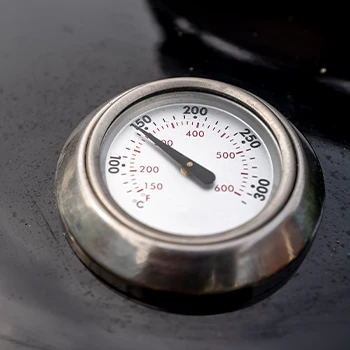
A high-quality and accurate thermometer is essential for the outcome of the cooking meat process.
An Ideal thermometer will be one with two or more meat temperature probes.
The placement of the probes is important. If possible, place one probe 1" above the grate and at least 2" away from the meat to get an accurate smoker temperature.
When looking for the internal temperature of the meat, it is crucial to test several areas on the meat and take the lowest reading.
Insert the probe into the center of the meat and take a reading, then push past the center to see a difference.
Avoid sticking the probe into a chunk of fat, as this will give a lower reading than the meat [3].
Related Article:
References:
- https://www.smokedbbqsource.com/smoking-times-temperatures/
- https://www.foodfirefriends.com/smoking-times-temperatures-chart/
- https://kingofthecoals.com/smoking-times-temperatures/


